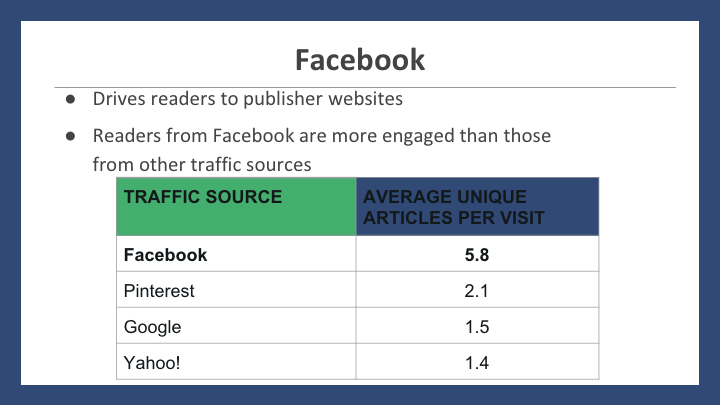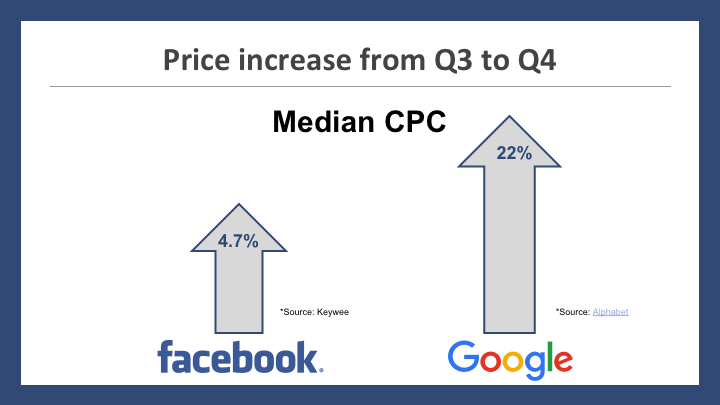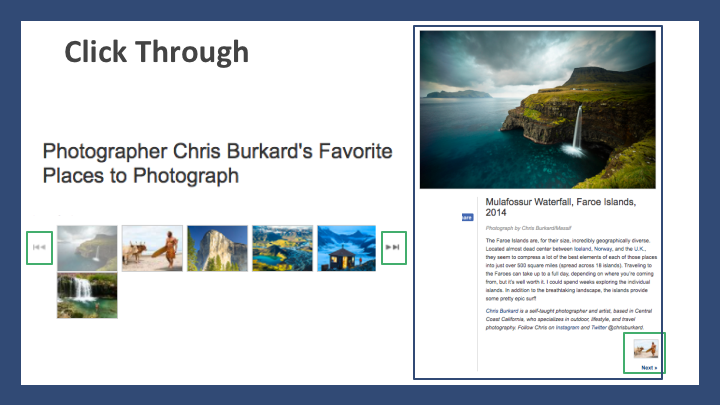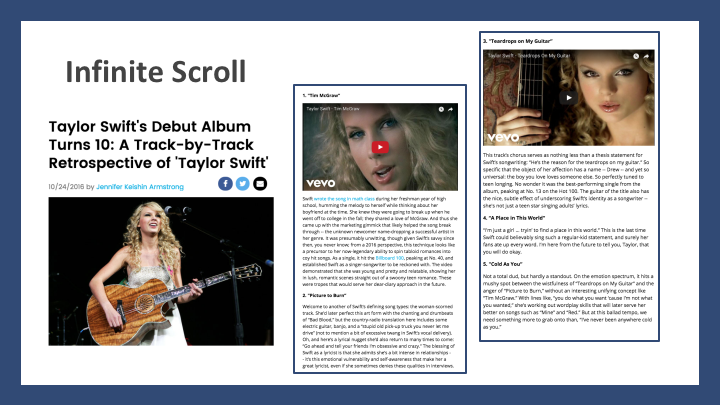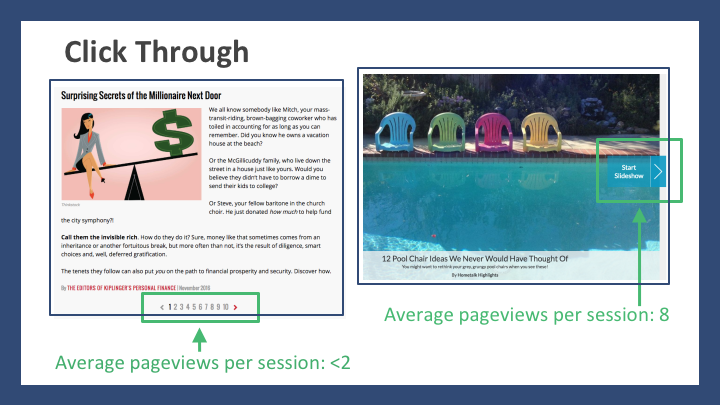In the world of paid traffic, Q4 is a notoriously expensive time of year. Thanks to the annual surge in holiday shopping, marketers have come to expect a significant bump in the cost of online advertising during the final months of the year. So while traditional e-commerce players scramble to compete for holiday clicks, now is the ideal time for publishers to leverage Facebook as a paid distribution channel in light of Google’s Q4 price surge.
In our latest webinar, “Using Facebook to Take Advantage of Google’s Q4 Price Surge,” we examined why Q4 is the optimal time for publishers to promote cost-per-page-view (CPPV) campaigns. We also explored related topics, including:
- How to earn revenue from CPPV campaigns
- How CPC on Facebook and Google impacts CPPV campaigns
- Best practices for CPPV campaigns and the slideshow user experience
- How to optimize slideshows to increase click-through rates
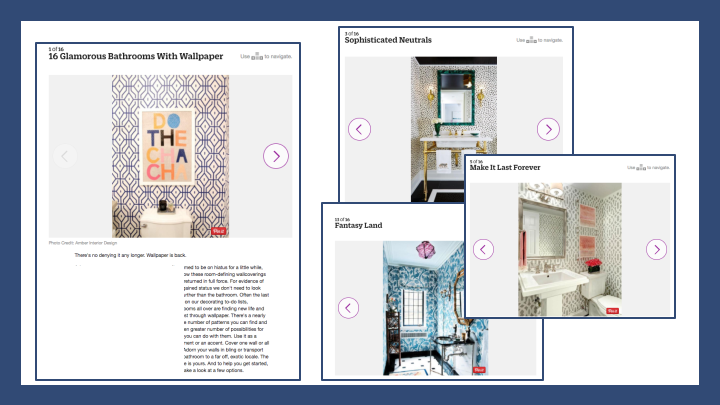
What are Cost-Per-Page-View Campaigns?
Before diving into why Q4 is ideal for CPPV campaigns, it’s important to first establish exactly what comprises a CPPV campaign. To do this, let’s consider the following simplified example.
Imagine that a publisher is paying Facebook a CPC of $0.05 to send users to its website. This means that the publisher will pay $50 for every 1,000 website visitors.
Paid: $0.05 / visitor x 1,000 visitors = $50
At the same time, the publisher is serving Google display ads on its website at a CPM of $10. So for every 1,000 impressions, the publisher is making $10.
Earned: $10 CPM x 1,000 visitors = $10
Combining these numbers, one would assume that a publisher would lose $40 per 1,000 visitors, given that:
$10 earned – $50 paid = -$40 per 1,000 visitors
Taken at face value, this strategy is unsustainable. So then, why would a publisher willingly lose 80% of its investment?
The truth is that smart publishers don’t lose on their investment. This is because most CPPV campaigns direct users to slideshows, which generally result in upwards of 10 pageviews per user.
Using this average, the amount a publisher earns per user is multiplied by 10.
Earned: $10 CPM x 1,000 visitors x 10 pages = $100
Therefore, instead of losing $40 for each 1,000 visitors, the publisher would instead earn $50. For publishers taking advantage of Facebook’s advanced targeting capabilities, this strategy can easily scale and quickly become quite profitable. In fact, Facebook users on average view over twice as many article per visit than other traffic sources.
What Makes Q4 Prime for CPPV Campaigns?
Working with hundreds of publishers, we’ve noticed a few trends consistently appear across the board. Among them is a much more significant increase in median CPC during Q4 for Google (22%) compared to Facebook (4.7%).
Since CPC is more often than not a proxy for CPM, this means that during Q4 publishers will pay a slightly higher CPC to drive traffic to their sites, while at the same time enjoying a significant increase in revenue from display ads.
Optimizing CPPV Campaigns: Click-Through and Infinite Scroll Slideshows
As we’ve established, the primary use case for CPPV campaigns among publishers is slide shows. That said, the average number of slides (a.k.a. page views) that a publisher can garner from each slideshow has a direct impact on the campaign’s the overall revenue. The greater the number of slides, the greater the potential revenue.
This is why publishers looking to maximize their revenue from CPPV campaigns should pay special attention to the slideshow user experience on their website. From our point of view, there are two primary types of slideshows: click-through and infinite scroll.
Traditionally, click-through slideshows tend to:
- Have an easily digestible format
- Take longer to load, which can be an issue for mobile
- Have more friction, since users have to scroll to bottom of the page to navigate through slide show
- Have an average of less than two page views per session
On the other hand, infinite scroll slideshows:
- Are best for robust content per slide
- Need more text to break up the pages
- Dynamically change URLs, allowing for ad refreshing
In general, Keywee data suggests that the most page views will be consumed per session when the user experiences the least amount of friction as he or she navigates through a slideshow. We’ve also noticed that when the “next slide” button is easily accessible, meaning near the top of the user’s browser, that the average number of pageviews increases by up to 8 pages.
In addition to this, we’ve also uncovered stats surrounding:
- The ideal number of slides per slideshow
- The difference in user experience between desktop and mobile
- The efficacy of affiliate links
- How to best leverage branded content
‘Tis the Slideshow Season
By now we’ve only scratched the surface as to why smart publishers should be eager to implement CPPV campaigns during Q4. In the full webinar, we’ll cover all of the previously mentioned topics and more, including:
- Scaling CPPV campaigns
- Managing Advertising Yields
- Why the Facebook Advertising Network (FAN) is not ideal for CPPV campaigns
Fill out the form to watch the full webinar:
—
About Keywee
Keywee enables the creation, distribution, and measurement of content that drives business results for publishers, retailers and brands. Hundreds of iconic brands and digital natives like The New York Times, The BBC, AOL, and Forbes use Keywee’s revolutionary platform to find the audiences most likely to meet specific goals for their content.
Interested in learning more about Keywee? Click here to request a demo.
